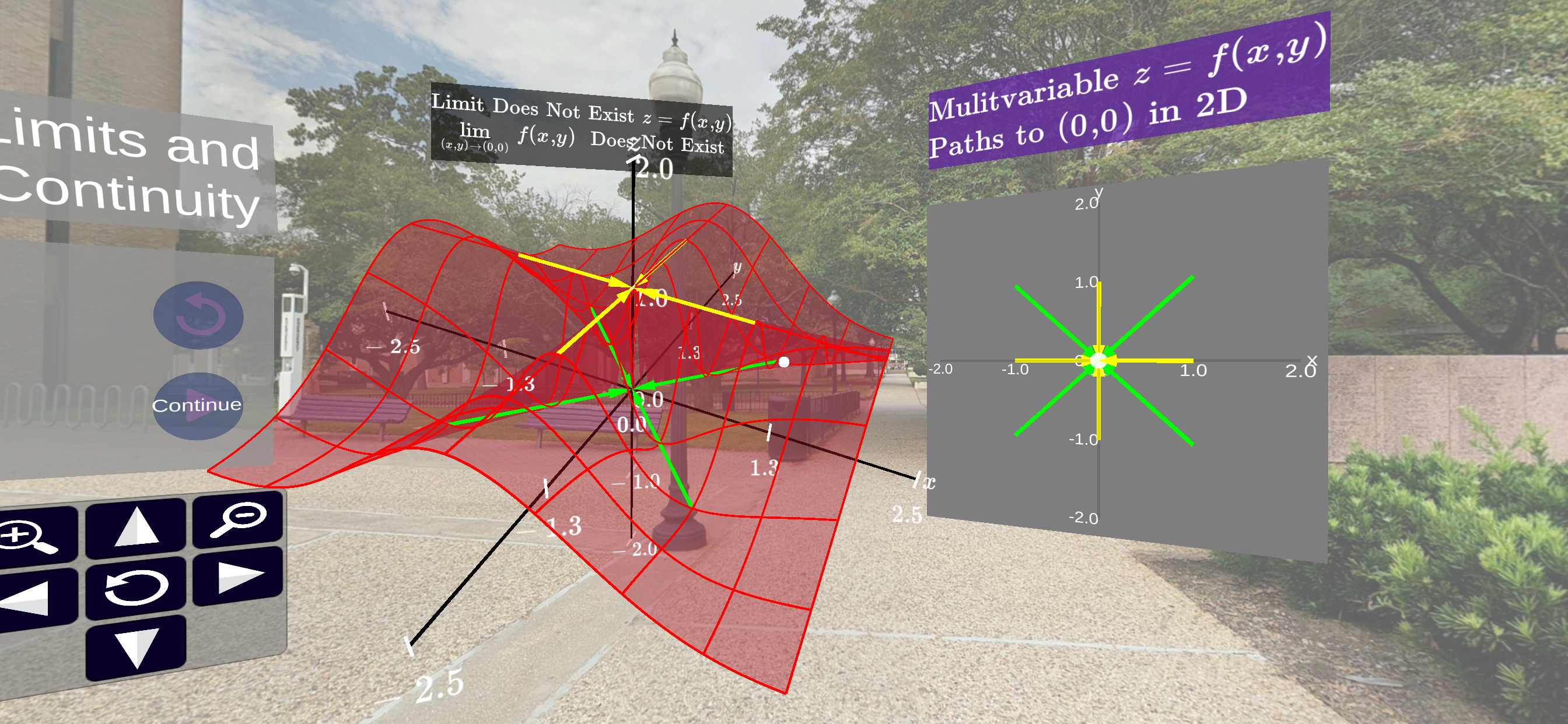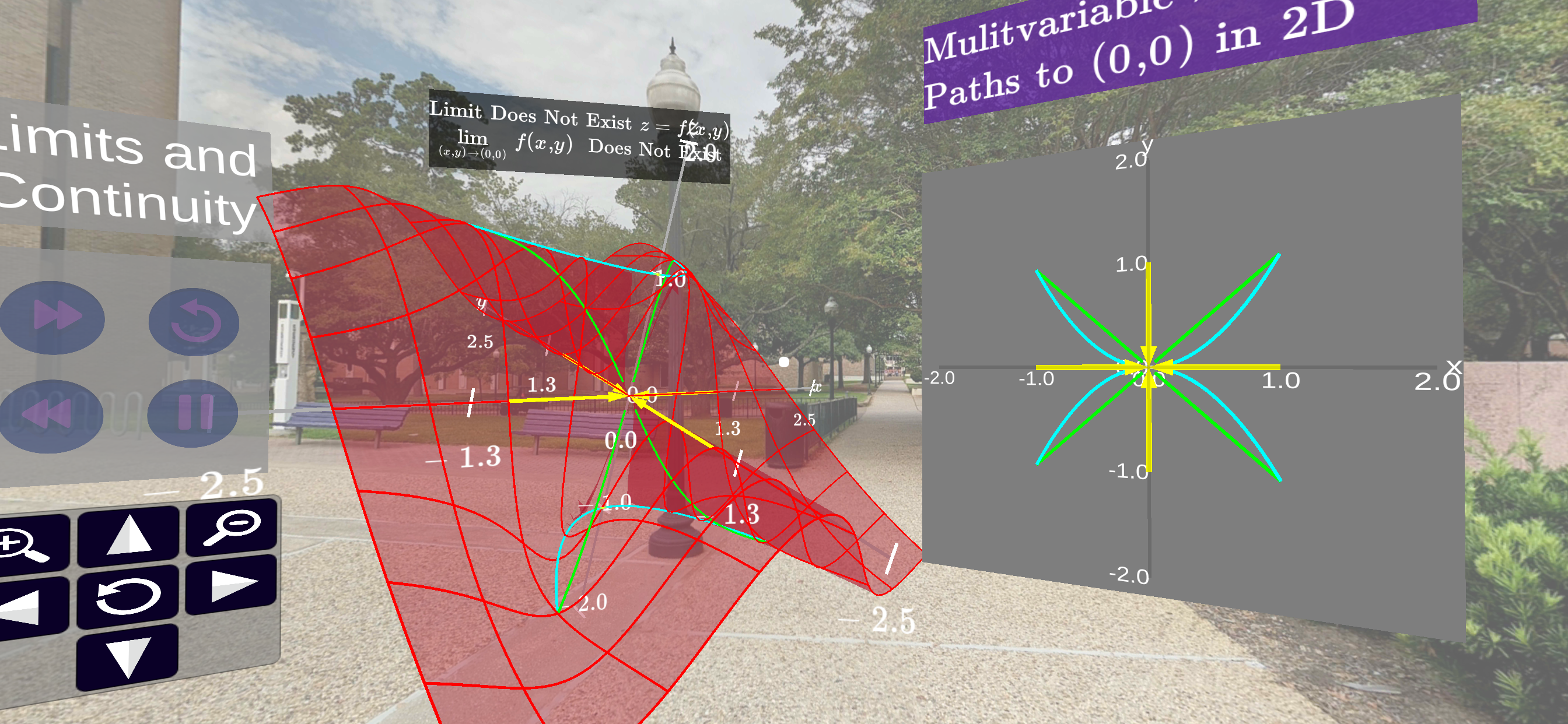As we have seen in our lessons, it can be very difficult to determine if a limit such as
\begin{equation*}
\lim_{(x,y) \to (a,b)} f(x,y)
\end{equation*}
exists. However, to discover that such a limit does not exist, all that is required is to find two paths going to \((a,b)\) such that \(f(x,y)\) converges to different values as it follows these paths. Let’s introduce the notation of the previous section and expound on this notion. Suppose we have two paths \(c_1(t) = (x_1(t), y_1(t))\) and \(c_2(t)=(x_2(t), y_2(t))\) such that both
\begin{equation*}
\lim_{t \to t_0} c_1(t) = (a,b) \qquad \text{and} \qquad \lim_{t\to t_0} c_2(t) = (a,b)\text{.}
\end{equation*}
That is, both paths go to \((a,b)\) as \(t\to t_0\text{.}\) We now consider what happens as we traverse those paths overlayed on \(f\text{.}\) To answer this questions we consider the limits
\begin{equation*}
\lim_{t\to t_0} f(x_1(t), y_1(t)) \qquad \text{and} \qquad \lim_{t\to t_0} f(x_2(t), y_2(t)) \text{.}
\end{equation*}
If these limits are different, then we know our original limit, \(\lim_{(x,y) \to (a,b)} f(x,y) \) does not exists.
Activity 6.4.2.
Consider the function given by
\begin{equation*}
f(x,y) = \frac{xy}{x^2+y^2}
\end{equation*}
and the limit
\begin{equation}
\lim_{(x,y) \to (0,0)} \frac{xy}{x^2+y^2} \text{.}\tag{6.4.2}
\end{equation}
(a)
Is the function continuous at \((0,0)\text{?}\) Explain why or why not?
(b)
Consider the path \(c(t)=(t,0)\text{.}\) Graph this path and confirm that this path goes to \((0,0)\) at \(t \to 0\text{.}\)
(c)
Substitute this path into
\begin{equation*}
\lim_{t\to 0 } f(x(t), y(t))
\end{equation*}
and find the limit.
Hint.
Using the path \(c(t)=(t,0)\) we have \(x(t)=t\) and \(y(t)=0\text{.}\) Thus, the limit becomes
\begin{equation*}
\lim_{t\to 0} f(t,0)\text{.}
\end{equation*}
(d)
Repeat parts
b and
c for the path
\(c(t) = (0,t)\text{.}\) Can you say the limit
(6.4.2) does not exists?
(e)
Consider the path \(c(t) = (t , mt)\) were \(m\) is a real number. Graph \(c\) for several values of \(m\text{?}\) What family of functions do these represent?
(f)
Substitute this path into
\begin{equation*}
\lim_{t\to 0 } f(x(t), y(t))
\end{equation*}
and find the limit.
Hint.
Using the path \(c(t)=(t,mt)\) we have \(x(t)=t\) and \(y(t)=mt\text{.}\) Thus, the limit becomes
\begin{equation*}
\lim_{t\to 0} f(t,mt) = \lim_{t\to 0} \frac{mt^2}{t^2 + m^2t^2}\text{.}
\end{equation*}
(g)
Does the limit go to the same value for each value of
\(m\text{?}\) What does this tell you about the limit in
(6.4.2)?

